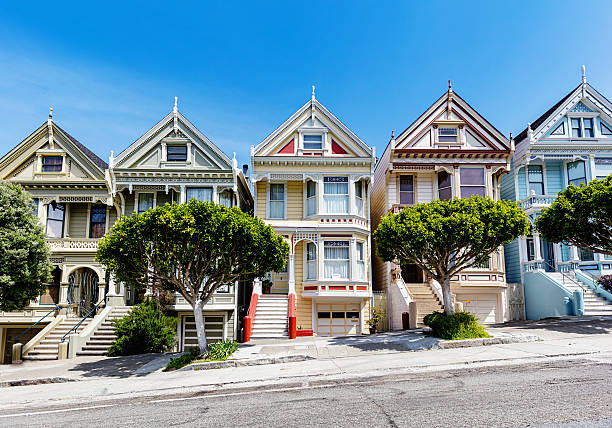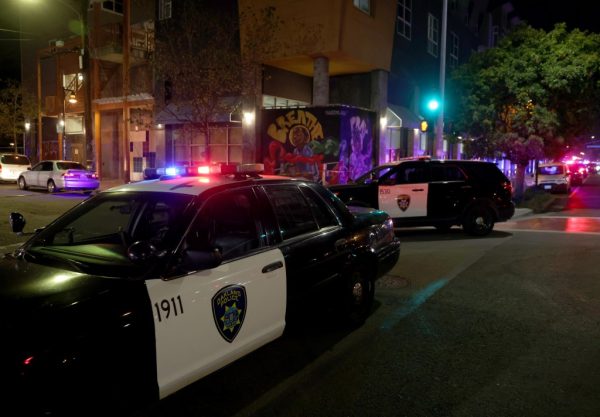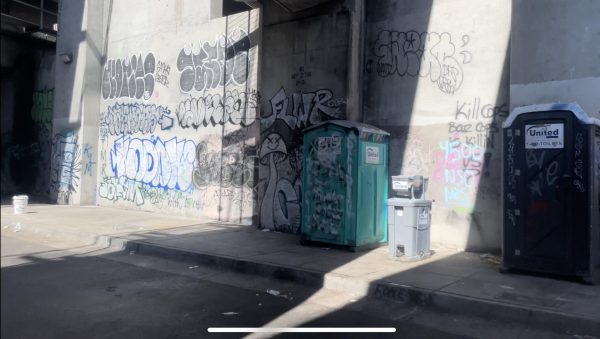The Bay Area’s Housing Crisis: Voter-Backed Failure
The Painted Ladies of San Francisco, historic victorian style colourful houses under blue summer sky. Alamo Square, San Francisco, California, USA.
May 5, 2022
The Bay Area is home to billionaires, tech investors, and an exponentially growing unhoused population. Who’s to blame?
The Bay Area makes for an ideal location to call home, from its beaches to rolling hills. Yet, for many in the Bay Area, their homes are restricted to pavement and doorways. As COVID-19 continues to wage war around the globe, Oakland and San Francisco continue to experience rising rates of unhoused people.
The driving force behind the housing crisis is a lack of affordable housing, in part due to low voter turnout.
“People vote on whether or not to have rent control in a particular city in California, and they also vote on what kind of rent control they want usually. Now it’s true. Some cities pass rent control legislation without voter input. So if San Francisco doesn’t have enough, [it’s the voter’s] fault,” explained Elizabeth Bergman, Associate Professor of Political Science at CSU East Bay, who focuses on California Politics and Voting behavior.
“We live in a participatory democracy. And if we don’t participate, we don’t get what we need. It’s what the voters want it for the residents of San Francisco. So the beef has to be with them.”
Mobilizing voters to participate in City Council meetings and elections, especially passing policies to improve housing, has been a goal of the Housing Action Coalition, a non-profit serving the Bay Area for over 20 years.
Those in need of housing do not fall into the stereotype of abusing substances or being unwilling to work, as a Vox news article detailed the plight of Todd, who lost his job in the 2009 housing crisis and was left unable to get back on his feet.
“I was a volunteer firefighter; I coached football and baseball, I was saving my money, doing everything you’re supposed to do, being a single father, raising my daughter by myself. Then the economy just went to hell, and the company threw me to the wolves,” Todd told Vox.
With a lack of social safety nets, government aid has abandoned those in financial assistance, furthering the unhoused crisis through bureaucratic loopholes pushing chronic homelessness to new highs. Todd was unable to afford the cost of living in the Bay Area, resorting to saving pennies for gas money so he could drive his daughter to school.
“I basically had a jar of pennies there, and I’d pull out a few to pay for gas. It was unbelievable. I thought the world was going to end,” he explained to Vox.
Todd is one of the thousands of unhoused people who fell to misfortunes, left to fend for themselves as a result of defunded social safety nets dating back to the 1970s. As the rich keep getting richer, the poor get poorer, leaving renters and low-income families to scrap pennies to remain housed.
“Tenants Together gets calls and emails from renters across the state, but in my own personal experience, it’s mostly been single mothers, people of color, and undocumented people who we serve,” said Eduardo Torres, Northern California Regional Coordinator of Tenants Together.
“A lot of people are one missed paycheck, a medical emergency, or car accident away from having housing insecurity, especially now with the rent being so damn high.” Policies continue to leave people of color and financially disadvantaged people to fend for themselves, especially as the pandemic waged war on the world. An estimated 64% of people were living paycheck to paycheck, according to a 2022 LendingClub report. Of those earning a six-figure salary, 48% reported living paycheck to paycheck, CNBC reported.
For families in San Francisco, making under $120,000 is considered below the poverty line, marking it as the second most expensive city in the United States, behind New York City.
“The federal government provided that social safety net, really until the 1970s. We defunded those parts of the government, and the bottom fell out. Like you took [it] apart, the social safety net and homelessness skyrocket. It’s not a shocking outcome,” explained Corey Smith, Deputy Director of Housing Action Coalition.
At a more local level, the Bay Area is failing to pass policies in favor of affordable housing due to ‘Not In My Backyard’ ideologies enabling private property owners to battle low-income housing that would reduce their property value.
“Berkeley is one of the most vicious perpetrators of NIMBY,” Bergman said. “They had zoning that prohibited people of color from even owning property in Berkeley. And Berkeley currently doesn’t even want to add more units.
“They refuse to add to the housing stock, local people don’t want zoning changes that allow high density, for example, one of the primary reasons is they know how to lower the value of their own property.”
Nevertheless, affordable housing is a great idea that costs more money than the state is willing to provide. It would take an estimated 60 billion dollars in federal funding to solve the housing crisis in the Bay Area alone, according to Smith. Additionally, it costs roughly $750,000 to build one unit in a subsidized housing building, making it extremely difficult to raise funds at a state or federal level, he explained.
So what has the Bay Area done correctly? Pass renter protection ordinances in favor of the people, not profit.
“In recent years, some cities in the Bay Area have been able to pass renter protection ordinances to help combat the housing crisis. For example, within the past five years, Richmond and Mountain View are two cities that have been able to pass Rent Control and Just Cause for Eviction through ballot measures. Oakland has strengthened some of their existing renter protections, too. However, the state of California has really done next to nothing to address this statewide problem,” Torres explained.
But the problem doesn’t stop with policies being passed. Voters continue to fail at turning out to elections, allowing for harmful policies such as the policies passed in the 1970s, which enabled California citizens to protest any building proposals in their community. Voters continually fail to repeal laws that harm renters and their protections, creating a larger power imbalance between renter and landlord, Torres elaborated.
Torres explained that when we don’t address these problems as voters, there is no accountability for the state legislators siding with private interest groups and realtors, leaving the issue of affordable housing to a local level.
Voter turnout is a crucial step towards addressing the housing crisis, favoring policies that put renters and Bay Area residents’ best interests as the concern of the policies. The hurdles don’t stop there.
“Many renters also found it very hard to navigate through the system, as well as getting a hold of someone to help. A combination of all of these barriers have caused many renters to be harassed or forcibly displaced by property owners, despite a statewide eviction moratorium. Even when renters have done all that they could to follow the law and apply for rental assistance, they may have still been on the verge of being pushed out of their homes,” Torres continued.
Voting may seem like a ‘band-aid’ approach at first glance, but the policies keeping renters at the mercy of landlords fall into local laws being passed year after year where property owners show up more than renters.
However, undocumented immigrants, registered felons, and those without visas living in San Francisco are unable to vote due to restrictions, probing the question of how effective voting is for those who are unable to.
















